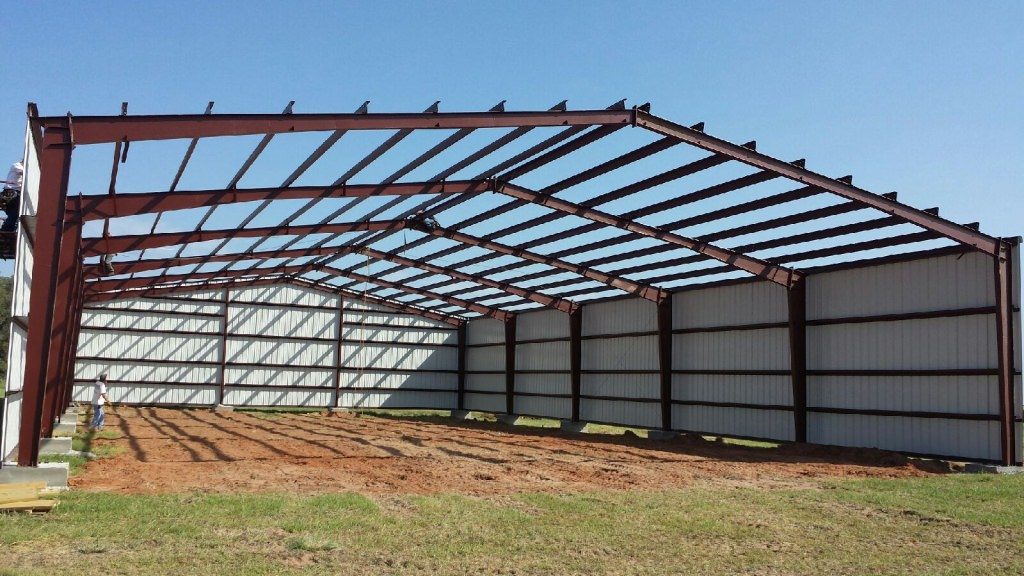Back to Basics: A Guide to Envelope Assembly Types
By Alex Rippere
 As part of a series on energy code basics, this month’s article addresses envelope assembly types. Specifically, we look at why some kinds of construction comply with energy codes better than others.
As part of a series on energy code basics, this month’s article addresses envelope assembly types. Specifically, we look at why some kinds of construction comply with energy codes better than others.
Broadly speaking, the energy code breaks out a building’s exterior into three major categories of construction: framed, mass, or what’s known as “metal building.”
Since metal buildings are rare in New York City, we won’t cover them in detail. To distinguish them from other construction types, these buildings are steel-framed structures in which the primary structural members are generally constructed off-site, hoisted into place, and then connected by running metal “girts” and “purlins” between these structural steel frames. An exterior envelope (usually corrugated metal) is then affixed to the skeleton. Because metal buildings perform so poorly from an energy standpoint, they typically must meet more stringent envelope requirements.
Here’s a picture of a metal building under construction for reference:
Image courtesy of Wheeler Metals
NOTE: The values given below are from ASHRAE 90.1-2013 Table 5.5-4, but are broadly equal to the Energy Conservation Code (ECC) for Climate Zone 4, where New York is located. For residential buildings three stories or fewer in height, please consult New York City Energy Conservation Code (NYCECC) 16 Tables R402.1.2 or R402.1.4. REScheck software should be used to establish compliance with the residential energy code.
Roof Assemblies – Starting at the Top
Insulation Entirely Above Deck. The typical flat-roof type in New York City for commercial construction, the vast majority of roofs and terraces fall under this category.
Insulation requirements:
- R-30 min continuous insulation or
- U-0.032 max for entire assembly
Attics and Other Roofs. Energy code doesn’t like its insulation on the inside of the roof, so these have to hit a significantly lower U-factor than their above-deck counterparts. If planning to use a roof in a way that makes above-deck insulation impractical—say, for parking—the amount of required insulation essentially doubles. Further, more complicated U-factor calculations may be needed to demonstrate compliance. A9.2(a)(6) of ASHRAE 90.1-2013 advises against using “parallel path” sum-of-R calculations for “other roof” assemblies. Basic insulation de-rating provisions may be found in Table A9.2-2 of that same section for insulation interrupted by typical roof framing members.
Insulation requirements:
- R-49 min cavity insulation in between joists (higher preferred), or
- U-0.021 max for entire assembly
Above-Grade Walls – On to the Four Corners
Mass. While mass walls is a relatively broad category, it generally means concrete—block, cast, or pre-cast. Mass walls have typically need continuous insulation to pass energy code. However, this type doesn’t require nearly as low a U-factor as a framed wall. If the mass wall has furring studs with cavity insulation or insulated curtain wall spandrel on the exterior, then an easy de-rating factor for that insulation can be found in Table A3.1-4. Most mass wall U-factors can be found in Tables A3.1 and are easily calculated in COMcheck.
Insulation requirements:
- R-9.5 continuous insulation for commercial buildings, R-11.4 continuous insulation for residential buildings over 3 stories, or
- U-0.104 max for entire assembly for commercial buildings, U-0.090 max for entire assembly for residential buildings over 3 stories
Steel-Framed. Steel stud walls and curtain wall systems fall under this category. While finding out actual U-factors of curtain walls usually involves computer simulations and other math, for the purposes of establishing basic compliance, they can be compared to steel-stud framed walls and insulated as such. However, to pass energy code, curtain walls almost always require some amount of continuous insulation these days. Insulated glazing units and framing cannot be counted on to substitute for insulation in any meaningful way.
Insulation requirements:
- R-13 min cavity insulation and R-7.5 min continuous or
- U-0.064 max for entire assembly
Wood-Framed. This category includes your typical “stick” framed, wood-stud wall. As a reminder, this construction type is generally only permitted by building code in parts of Staten Island and Queens. Wood stud walls have slightly less onerous insulation requirements than steel-framed walls as wood doesn’t conduct nearly as much heat as steel does.
Insulation requirements:
- R-13 min cavity insulation with R-3.8 min continuous or min R-20 cavity without continuous, or
- U-0.064 max for entire assembly
Below-Grade Walls – Cellars Need Insulation, Too
Below-grade walls are almost always either reinforced concrete or concrete block, and they follow similar rules as above-grade mass walls. However, below-grade walls have the option of meeting a maximum C-factor—similar to a U-factor, but without the assumed inclusion of air films. Since below-grade walls by nature don’t have air films on the exterior, we go by C-factor.
Insulation requirements:
- R-7.5 min continuous insulation for commercial buildings, R-10 continuous insulation for residential buildings over 3 stories, or
- C-0.119 max for entire assembly for commercial buildings, C-0.092 max for entire assembly for residential buildings over 3 stories
NOTE: In New York City’s climate zone, most structures have a basement, cellar, or crawlspace below the first floor. If the crawlspace isn’t heated, then the lowest floor can be treated like a “slab on grade.” More continuous insulation is required (R-15) on the outside face of the footing walls, but it needs only run to 24” deep below grade—not the full height of the below-grade wall, as otherwise required for basements and cellar floors.
Floors – Beware the Cantilever
Floors over unconditioned space must be insulated to prevent heat loss or gain through the floor. Including a lot of uninsulated floor or roof area is an easy way to fail COMcheck. Since heat rises, uninsulated or minimally insulated horizontal surfaces tend to break COMcheck and thus fail energy code.
Mass. Typically, this category includes poured-concrete slab floors or metal deck with concrete topping slab. Unlike roofs, floors can be insulated on either the inside or outside of the assembly, without penalty.
Insulation requirements:
- R-14.6 min continuous insulation for commercial buildings, R-16.7 min continuous insulation for residential buildings over 3 stories, or
- U-0.057 max for entire assembly for commercial buildings, U-0.051 max for entire assembly for residential buildings over 3 stories
Steel Joist. Floors using steel joists between the structural frame can get away without continuous insulation. In this instance, wood-framed floors are held to the same cavity insulation requirements, but must hit a lower U-factor of 0.033, which is easier with wood studs.
Insulation requirements:
- R-30 min cavity insulation between joists or
- U-0.038 for entire assembly
If you have questions about envelope assembly types or the NYCECC 16, contact Metropolis Group today at 212.233.6344 for more information.

